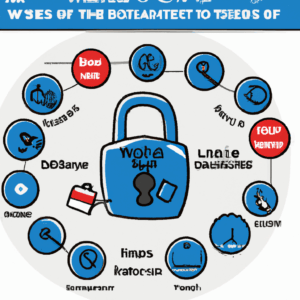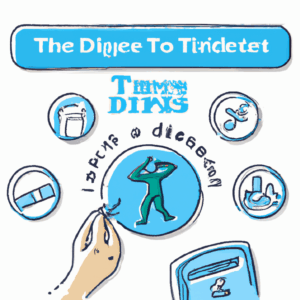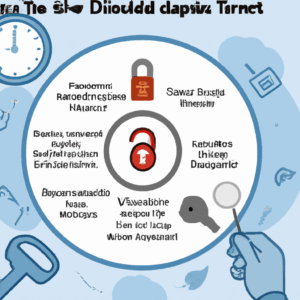Introduction: Context and Importance
Type 1 diabetes is a chronic condition that has become a significant part of the global health landscape. Unlike type 2 diabetes, which often develops later in life and is frequently associated with lifestyle factors, type 1 diabetes is an autoimmune disease that typically emerges in childhood or early adulthood. It requires lifelong management and vigilance. Understanding and effectively managing this condition is crucial not only for those directly affected but also for their families, caregivers, and society at large. With advances in medical science and technology, those living with type 1 diabetes today have more tools and resources available than ever before. This blog post aims to explore the multifaceted journey of living with type 1 diabetes, offering insights, practical tips, and inspiration for a healthier future.
Medical Overview
Type 1 diabetes occurs when the body’s immune system mistakenly attacks the insulin-producing beta cells in the pancreas. Insulin is a hormone essential for regulating blood sugar levels. Without it, glucose builds up in the bloodstream, leading to potentially life-threatening complications. Unlike type 2 diabetes, which can often be managed with lifestyle changes and oral medications, type 1 diabetes requires regular insulin administration.
Diagnosis usually involves blood tests to measure blood sugar levels and the presence of certain antibodies that indicate an autoimmune response. Once diagnosed, individuals must regularly monitor their blood glucose levels, balance insulin administration with food intake, and maintain a healthy lifestyle. Advances in technology, such as continuous glucose monitors (CGMs) and insulin pumps, have revolutionized diabetes management by providing more precise control over blood sugar levels.
The medical community continues to research potential cures and improved treatments. While a cure remains elusive, progress in understanding the genetic and environmental factors contributing to type 1 diabetes offers hope for better management and prevention strategies.
Patient Stories
Consider Sarah, a 14-year-old who was diagnosed with type 1 diabetes at the age of 10. For Sarah, managing her condition involves balancing school, sports, and social activities with her health needs. She has learned to discreetly check her blood sugar levels and administer insulin, using a CGM and an insulin pump to help manage her condition more effectively. Despite the challenges, Sarah remains active in her soccer team and excels academically, proving that diabetes does not define her.
Then there’s Tom, a 35-year-old who was diagnosed at the age of 22. Initially overwhelmed by the diagnosis, Tom struggled to adjust his lifestyle. With the support of a dedicated healthcare team and through connecting with others in the diabetes community, he has become an advocate for diabetes awareness. Tom’s story highlights the importance of support networks and the power of community in managing chronic illnesses.
These stories illustrate the diverse experiences of those living with type 1 diabetes, emphasizing resilience and adaptability. Each journey is unique, but all share a common thread of overcoming obstacles and striving for a fulfilling life.
Practical Tips for Daily Life
Living with type 1 diabetes requires constant vigilance and proactive management. Here are some practical tips to help navigate daily life:
1. Develop a Routine: Establishing a daily routine that includes regular blood sugar monitoring, meal planning, and exercise can help maintain stable glucose levels.
2. Educate Yourself and Others: Understanding your condition is empowering. Stay informed about the latest research and educate friends and family to create a supportive environment.
3. Meal Planning: Balancing carbohydrates, proteins, and fats is crucial. Consider working with a dietitian to create a personalized meal plan that fits your lifestyle.
4. Embrace Technology: Utilize tools like CGMs and insulin pumps to automate and simplify glucose monitoring and insulin delivery.
5. Stress Management: Stress can impact blood sugar levels. Practices such as yoga, meditation, and regular exercise can help manage stress effectively.
These strategies can help individuals with type 1 diabetes lead active and fulfilling lives while minimizing the impact of the disease on daily activities.
Expert Opinions and Clinical Perspectives
Experts in endocrinology and diabetes management emphasize the importance of individualized care plans for type 1 diabetes patients. Dr. Emily Lawson, a leading endocrinologist, states, “The key to effective management is understanding that each patient is unique. Personalized treatment plans that consider lifestyle, preferences, and technological comfort levels are essential.”
Advancements in diabetes technology have significantly improved management strategies. According to Dr. Michael Tran, a diabetes researcher, “The integration of artificial intelligence in diabetes care has the potential to revolutionize how we monitor and manage the disease. Predictive analytics can help anticipate glucose level changes, allowing for more proactive management.”
Clinicians also highlight the role of mental health support. Dr. Sarah Edwards, a psychologist specializing in chronic illnesses, notes, “The psychological impact of type 1 diabetes cannot be overlooked. Providing mental health resources and support systems is crucial for overall well-being.”
These expert insights underscore the importance of a comprehensive approach to type 1 diabetes management, combining medical, technological, and psychological support.
Common Misconceptions and Correct Understanding
Misconceptions about type 1 diabetes can lead to stigma and misinformation. One common myth is that type 1 diabetes results from poor lifestyle choices. In reality, it is an autoimmune disease with no known prevention methods.
Another misconception is that insulin therapy alone is sufficient for management. While insulin is crucial, comprehensive management includes regular monitoring, diet, and exercise. Additionally, some believe that type 1 diabetes only affects children. Although it’s more common in children and young adults, it can be diagnosed at any age.
It’s also important to clarify that while technology like CGMs and insulin pumps greatly aids in management, they do not replace the need for active engagement in one’s care plan. Understanding these nuances is key to supporting those with type 1 diabetes and fostering an informed community.
Summary and Outlook
Type 1 diabetes is a complex, chronic condition that requires diligent management and a comprehensive support system. Advances in medical science and technology have provided new tools to help those affected lead healthier lives. Patient stories highlight resilience and the potential for a fulfilling life despite the challenges.
Looking to the future, continued research and innovation hold promise for improved management strategies and, hopefully, a cure. Until then, education, support, and personalized care remain the cornerstones of effective type 1 diabetes management. By dispelling misconceptions and promoting understanding, we can build a more inclusive and supportive environment for those navigating life with type 1 diabetes.







